Biomedical Temperature Sensors Market Size
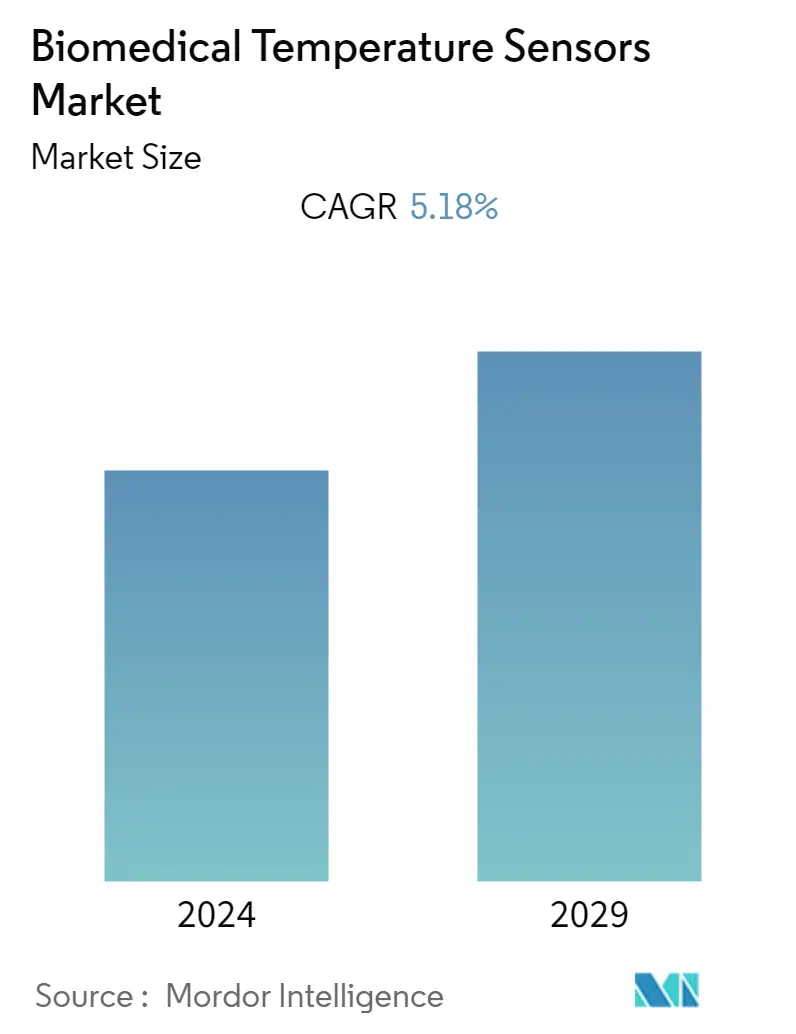
| Study Period | 2019 - 2029 |
| Base Year For Estimation | 2023 |
| CAGR | 5.18 % |
| Fastest Growing Market | Asia Pacific |
| Largest Market | North America |
| Market Concentration | Low |
Major Players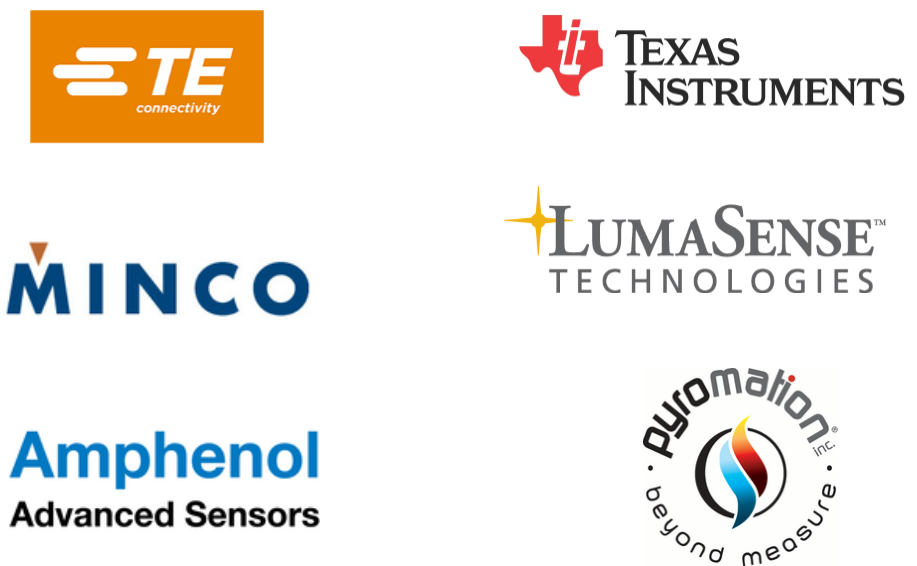
*Disclaimer: Major Players sorted in no particular order |
Biomedical Temperature Sensors Market Analysis
The biomedical temperature sensors market was valued at USD 6.17 billion in 2020, and it is expected to reach a value of USD 8.36 billion by 2026, projecting a CAGR of 5.18% during the forecast period (2021-2026). The growing applications of different temperature sensors in the biomedical sector are expected to contribute to the market's growth positively, during the forecast period.
- Over the past few years, the demand for biomedical temperature sensors has been increasing, along with rising application in the healthcare sector. This is due to an increase in investment by government to have safe and reliable healthcare infrastructure in place.
- Temperature sensors are critical in the healthcare industry, as they are used in painless or anesthesia-driven surgeries, life-supporting machines, dialysis of failed kidneys, analyzing blood information, oxygen temperature measurement for life support systems, temperature monitoring for neonatal and patients in critical care, digital temperature measurement, organ transplants monitoring, and many more sub-optimal surgeries.
- Temperature sensors can be used for measuring not only temperature, but also a number of other physical parameters. They are often applied in calorimetric flow sensors, i.e., for measuring blood or respiratory airflow. Skin blood flow (SBF) or skin perfusion is a complex phenomenon that occurs in capillaries.
- For instance, fiberoptic temperature sensors have found valuable application in numerous areas of research and treatment in biology and medicine. These include tissue monitoring during electromagnetic heating for cancer therapy, catheter-tip sensors as part of multi-purpose fiberoptic probes, patient monitoring during magnetic resonance imaging (MRI), and microwave biohazards studies.
Biomedical Temperature Sensors Market Trends
This section covers the major market trends shaping the Biomedical Temperature Sensors Market according to our research experts:
Fiber Optic Sensors (FoS) is Expected to Hold a Significant Share
- Fiber optic probes undergo total internal reflection and aid in possible future biomedical applications to carry out the simultaneous collection and analysis of samples for drug safety evaluation. It also helps in the sensing of biomolecules, identification of drug molecules, effluent monitoring, and overall pharmaceutical quality control of the product.
- Biomedical FOS can be categorized into four main types: physical, imaging, chemical, and biological. Meanwhile physical sensors measure a variety of physiological parameters, such as body temperature, blood pressure, and muscle displacement, imaging sensors encompass advanced techniques, such as optical coherence tomography(OCT) and photoacoustic imaging.
- Chemical sensors rely on fluorescence, spectroscopic, and indicator techniques and biological sensors tend to be more complex and rely on biologic recognition reactions, such as enzyme-substrate, antigen-antibody, or ligand-receptor.
- Moreover, IoT applications can save the lives of patients with a fast diagnosis of diseases, as well as finding an apt cure for it. FOS are the devices, which are capable of monitoring a specific biomedical variable and provide information that can give a rapid and accurate diagnosis of a patient's health condition. Therefore, the growing adoption of IOT in healthcare industry is penetrating the usage of fiber optic sensors.
- Recently, the European Union (EU) has also proposed to employ advanced technological devices and platforms to ease their primary healthcare functions, such as medical equipment for tele-monitoring and tele-diagnosis, system for patients to register their physiological measurements, and telehealth equipment, like sensors, which majorly use fiber optics sensors.
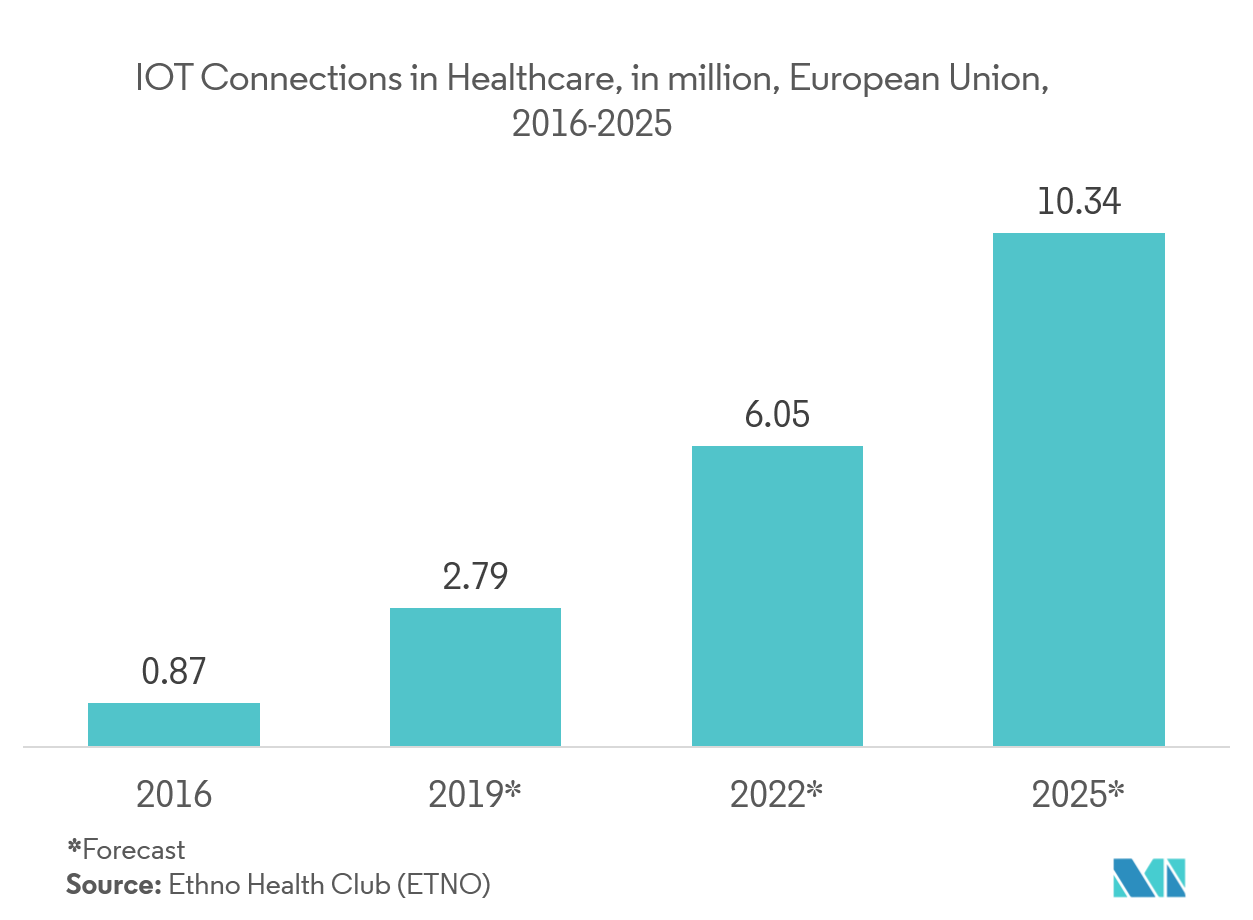
North America is Expected to Lead the Market
- Due to increasing need for medical services in the United States, North America is expected to experience lucrative growth, as the medical sensor providers are focusing on developing high value-add equipment catering to the rising needs. On the other side, stringent government guidelines across the region, along with the growing healthcare sector, are expected to trigger the growth of the market in this region.
- The US health expenditure increased by 5.3% in 2018, reflecting growing prices of medical goods and services and higher medicaid costs. The increase represents a sharp turn from 2017 spending, which the US Centers for Medicare and Medicaid Services (CMS) agency, in 2018, estimates to have been a 4.6% increase, to nearly USD 3.5 trillion.
- Additionally, the healthcare industry across the region is also making use of temperature sensors extensively for continuous biological cardiac output monitoring, thermal dilution catheters, etc.
- With such advancements across the healthcare industry in the region, coupled with various types of temperature sensors being integrated into more products, the market for temperature sensors is set to grow at a healthy rate.
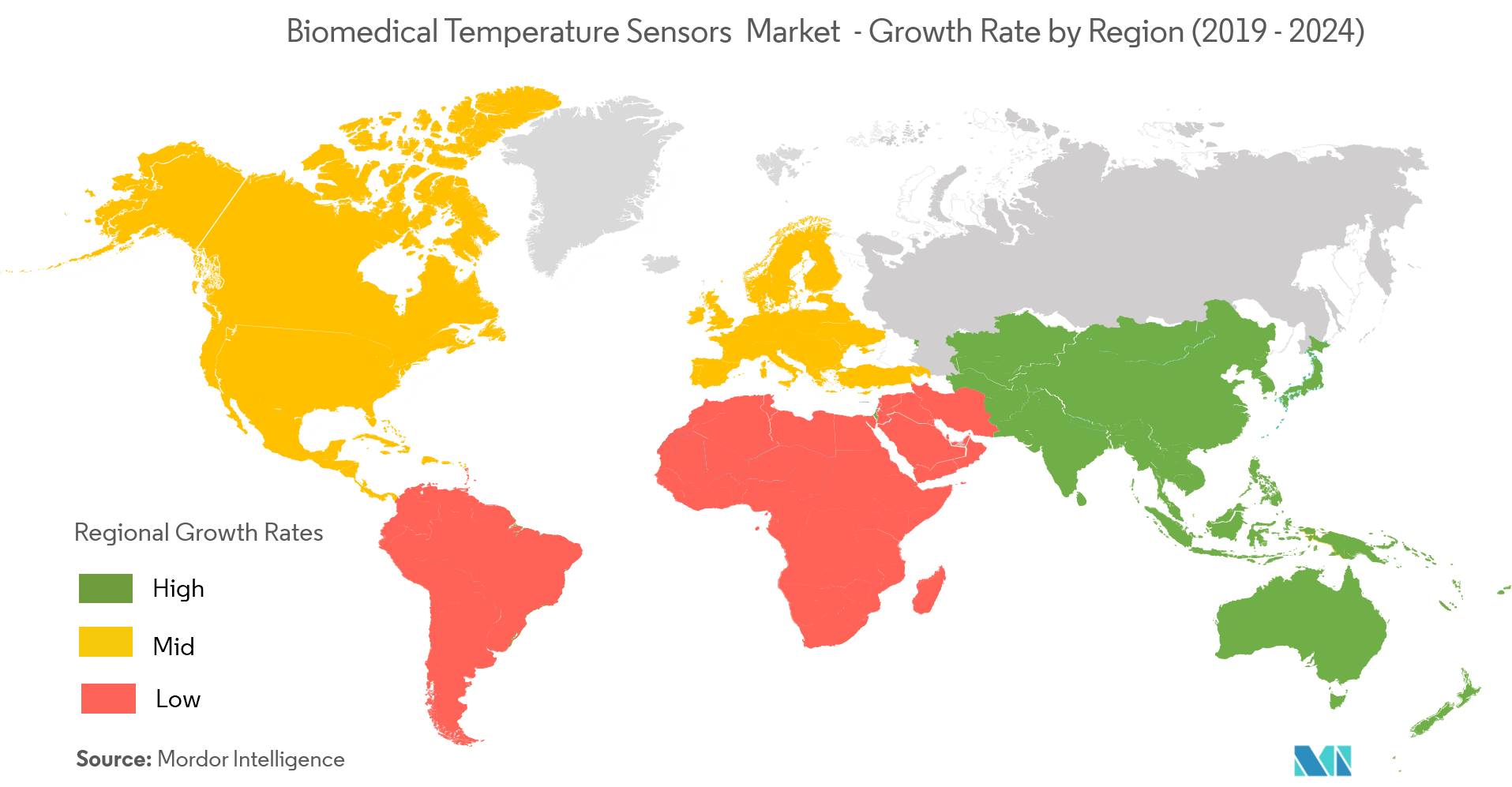
Biomedical Temperature Sensors Industry Overview
The biomedical temperature sensors market is fragmented.The growing demand for reliable and accurate information, rapid technological innovation, and increasing demand from the healthcare sectorprovide lucrative opportunities in the biomedical temperature sensorsmarket.Overall, the competitive rivalry among existing competitors is high. Moving forward, acquisitions and collaborations of large companies with startups are expected, which are focused toward innovation.
- September 2018 -TE Connectivity launched the online TE Store, which offers customers the option to purchase featured products direct via TE.com or through select distributors, along with instant access to product pricing, daily updates on product availability, and flexible shipping and delivery options.
Biomedical Temperature Sensors Market Leaders
-
TE Connectivity Ltd
-
Amphenol Advanced Sensors
-
Texas Instruments Incorporated
-
Minco Products Inc.
-
Smiths Medical Inc.
*Disclaimer: Major Players sorted in no particular order
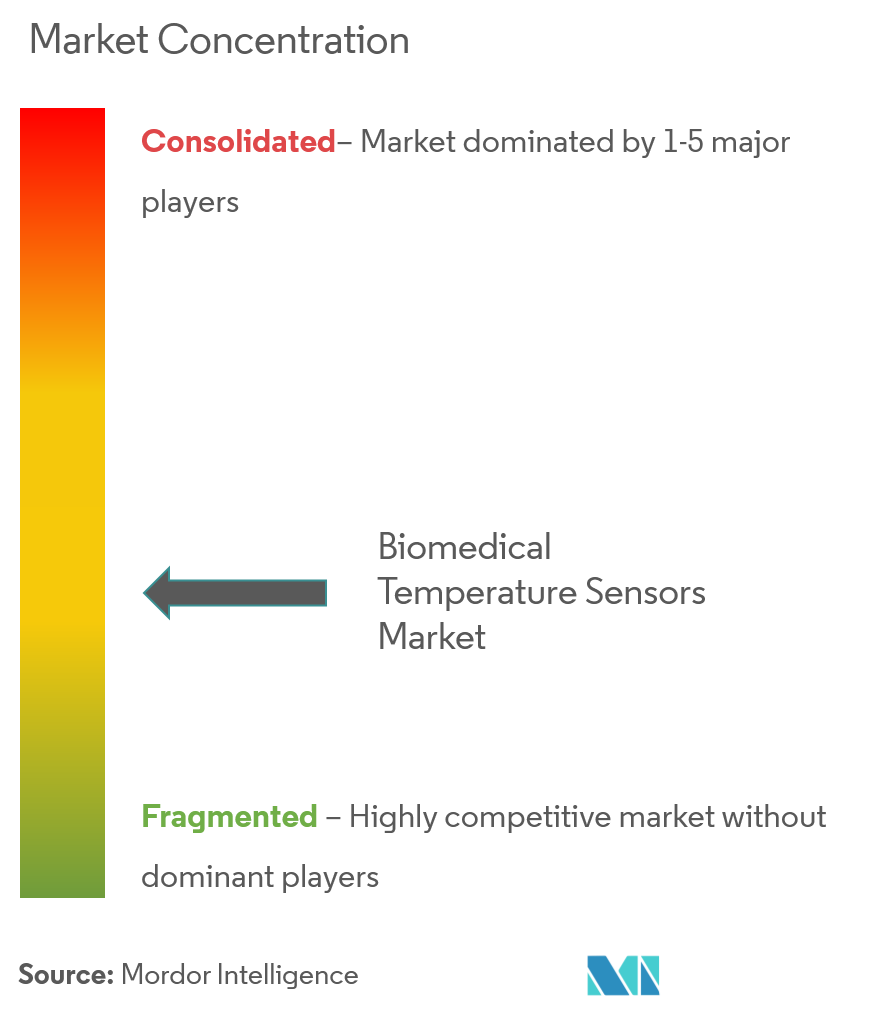
Biomedical Temperature Sensors Market Report - Table of Contents
1. INTRODUCTION
- 1.1 Study Deliverables
- 1.2 Study Assumptions
- 1.3 Scope of the Study
2. RESEARCH METHODOLOGY
3. EXECUTIVE SUMMARY
4. MARKET DYNAMICS
- 4.1 Market Overview
- 4.2 Introduction to Market Drivers and Restraints
-
4.3 Market Drivers
- 4.3.1 Increasing Spending on Diagnostics
- 4.3.2 Growing Demand for Fitness Devices
- 4.3.3 Increasing Health Concerns
-
4.4 Market Restraints
- 4.4.1 Complexities in Fabrication and High Costs
-
4.5 Industry Attractiveness - Porter's Five Forces Analysis
- 4.5.1 Threat of New Entrants
- 4.5.2 Bargaining Power of Buyers/Consumers
- 4.5.3 Bargaining Power of Suppliers
- 4.5.4 Threat of Substitute Products
- 4.5.5 Intensity of Competitive Rivalry
- 4.6 Technology Snapshot
5. MARKET SEGMENTATION
-
5.1 By Type
- 5.1.1 Thermocouples
- 5.1.2 Thermistors
- 5.1.3 Resistance Temperature Detectors (RTDs)
- 5.1.4 Liquid Crystal Temperature Sensors
- 5.1.5 Fibre Optic Sensors
- 5.1.6 Infrared Sensors
-
5.2 Geography
- 5.2.1 North America
- 5.2.2 Europe
- 5.2.3 Asia-Pacific
- 5.2.4 Rest of the World
6. COMPETITIVE LANDSCAPE
-
6.1 Company Profiles
- 6.1.1 TE Connectivity Ltd
- 6.1.2 Amphenol Advanced Sensors
- 6.1.3 Weed Instrument Co.
- 6.1.4 Smiths Medical Inc.
- 6.1.5 Minco Products Inc.
- 6.1.6 LumaSense Technologies Inc.
- 6.1.7 Dwyer Instruments Inc.
- 6.1.8 Analog Devices Inc.
- 6.1.9 Texas Instruments Incorporated
- 6.1.10 Pyromation Inc.
- *List Not Exhaustive
7. INVESTMENT ANALYSIS
8. MARKET OPPORTUNITIES AND FUTURE TRENDS
** Subject To AvailablityBiomedical Temperature Sensors Industry Segmentation
There are different types of temperature sensors: thermocouples, thermistors, resistance temperature detectors (RTDs), liquid crystal temperature sensors, fiber optic sensors, and infrared sensors.
| By Type | Thermocouples |
| Thermistors | |
| Resistance Temperature Detectors (RTDs) | |
| Liquid Crystal Temperature Sensors | |
| Fibre Optic Sensors | |
| Infrared Sensors | |
| Geography | North America |
| Europe | |
| Asia-Pacific | |
| Rest of the World |
Biomedical Temperature Sensors Market Research FAQs
What is the current Biomedical Temperature Sensors Market size?
The Biomedical Temperature Sensors Market is projected to register a CAGR of 5.18% during the forecast period (2024-2029)
Who are the key players in Biomedical Temperature Sensors Market?
TE Connectivity Ltd, Amphenol Advanced Sensors, Texas Instruments Incorporated, Minco Products Inc. and Smiths Medical Inc. are the major companies operating in the Biomedical Temperature Sensors Market.
Which is the fastest growing region in Biomedical Temperature Sensors Market?
Asia Pacific is estimated to grow at the highest CAGR over the forecast period (2024-2029).
Which region has the biggest share in Biomedical Temperature Sensors Market?
In 2024, the North America accounts for the largest market share in Biomedical Temperature Sensors Market.
What years does this Biomedical Temperature Sensors Market cover?
The report covers the Biomedical Temperature Sensors Market historical market size for years: 2019, 2020, 2021, 2022 and 2023. The report also forecasts the Biomedical Temperature Sensors Market size for years: 2024, 2025, 2026, 2027, 2028 and 2029.
Biomedical Temperature Sensor Industry Report
Statistics for the 2024 Biomedical Temperature Sensor market share, size and revenue growth rate, created by Mordor Intelligence™ Industry Reports. Biomedical Temperature Sensor analysis includes a market forecast outlook 2029 and historical overview. Get a sample of this industry analysis as a free report PDF download.



